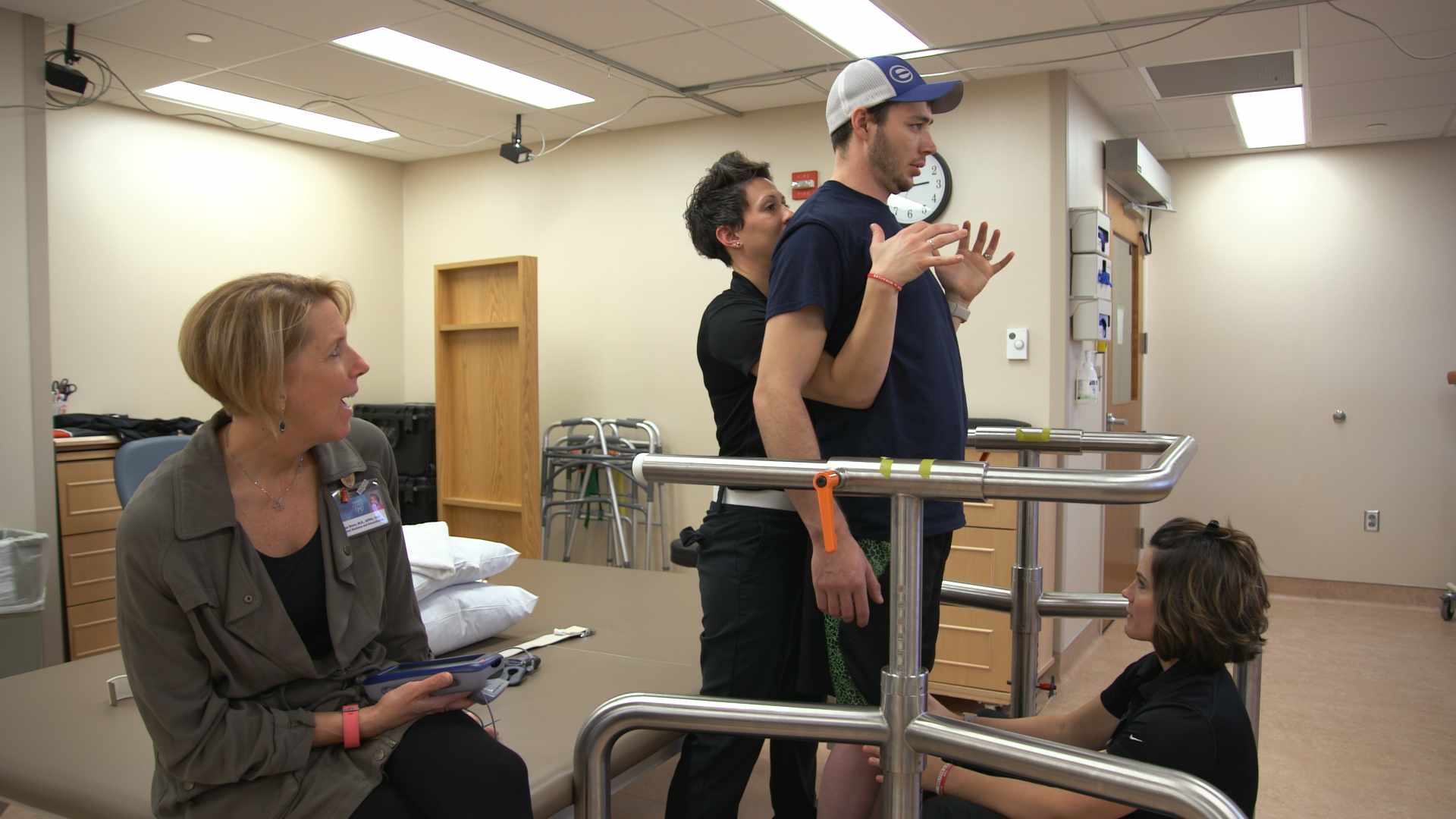
Jered Chinnock's smile widens as he recalls the first day researchers at Mayo Clinic activated an electronic stimulator implanted on his damaged spinal cord.
"It was almost mind-blowing. Right away I was able to move my toes, something I haven't seen in a while," the Wisconsin man says. It had been years, in fact, since Chinnock's back was broken in an accident. But, as reported in the current issue of Mayo Clinic Proceedings, his legs seem reawakened by a Mayo Clinic research project.
"Our initial results are, I would have to say, quite exciting," says the director of the Neural Engineering Laboratories at Mayo Clinic, Dr. Kendall Lee. "An electrode gets implanted below where the injury is. We’re not activating the muscle itself, but we are trying to neuromodulate the spinal cord so that the patients can decide whether they want to move their legs or not."
The Mayo Clinic collaboration is striving to replicate and expand on research previously done by UCLA and the University of Louisville. A key element of the project is more than a year of intensive therapy. "That involves a very large team of up to 30 people, ranging from therapists, nurses, kinesiologists – all the way to engineers and neural engineers," says Dr. Kristin Zhao with Mayo Clinic's Department of Physical Medicine and Rehabilitation. "They’re very passionate about figuring out this intervention to help more patients."
Dennis Douda shows how it works.
Watch: Researchers strive to help paralyzed man
https://www.youtube.com/watch?v=Gn9bi8rzulA
Journalists: A broadcast-quality video pkg (6:12) is in the downloads. Read the script.







